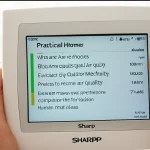Essential Strategies for Improving Indoor Air Quality in UK Homes
Improving indoor air quality starts with practical advice for air quality that fits the unique challenges of UK homes. Due to the often damp and chilly climate, improving indoor air quality requires a combination of ventilation, pollutant management, and moisture control. For example, in flats, natural ventilation is often limited, so using extractor fans and air purifiers becomes crucial. Terraced houses can benefit from strategic window openings and regular airing, especially in the kitchen and bathroom where moisture and cooking pollutants accumulate.
For detached homes, the focus is often on whole-house ventilation systems accompanied by humidity control devices to combat mould and condensation. In all cases, it’s essential to avoid sealing homes too tightly without proper airflow, as this traps pollutants indoors. Consider practical advice like scheduling brief periods of cross-ventilation daily, even in colder months.
Also read : How Does Choosing the Right Home Décor Reflect Your Personal Style?
Addressing the unique UK climate and building considerations means acknowledging frequent rains and high humidity, which can exacerbate mould growth and damp emissions. Using moisture-resistant materials and monitoring humidity levels helps maintain fresh air quality throughout the year. Such targeted strategies ensure more effective and sustainable improving indoor air quality tailored specifically to UK households.
Identifying Common Sources of Indoor Air Pollution in UK Properties
Understanding the sources of poor air quality in UK homes is crucial for improving indoor air quality effectively. One primary culprit is emissions from everyday activities like cooking, heating, and cleaning. For example, gas stoves release nitrogen dioxide, while certain cleaning products emit volatile organic compounds (VOCs), both contributing significantly to indoor air pollutants.
Also to read : How Can You Integrate Smart Technology into Your UK Living Space?
Outdoor pollutants also infiltrate UK properties through open windows and doors. Traffic-related pollution, pollen, and particulate matter are common indoor air pollutants that worsen indoor environments, especially in urban areas.
Hidden but impactful are damp and mould issues. Due to the UK’s damp climate, moisture accumulates easily, fostering mould growth and releasing spores that degrade air quality. Moreover, building materials such as old paints, adhesives, and insulation might emit chemicals over time, further worsening indoor pollution.
Tackling these sources requires practical strategies tailored to each home type and location. Addressing cooking emissions with extractor fans, limiting the use of chemical-heavy cleaners, and managing humidity can reduce indoor air pollutants substantially. Recognizing these common sources helps set a strong foundation for targeted UK home air quality tips and sustainable air quality improvements.








